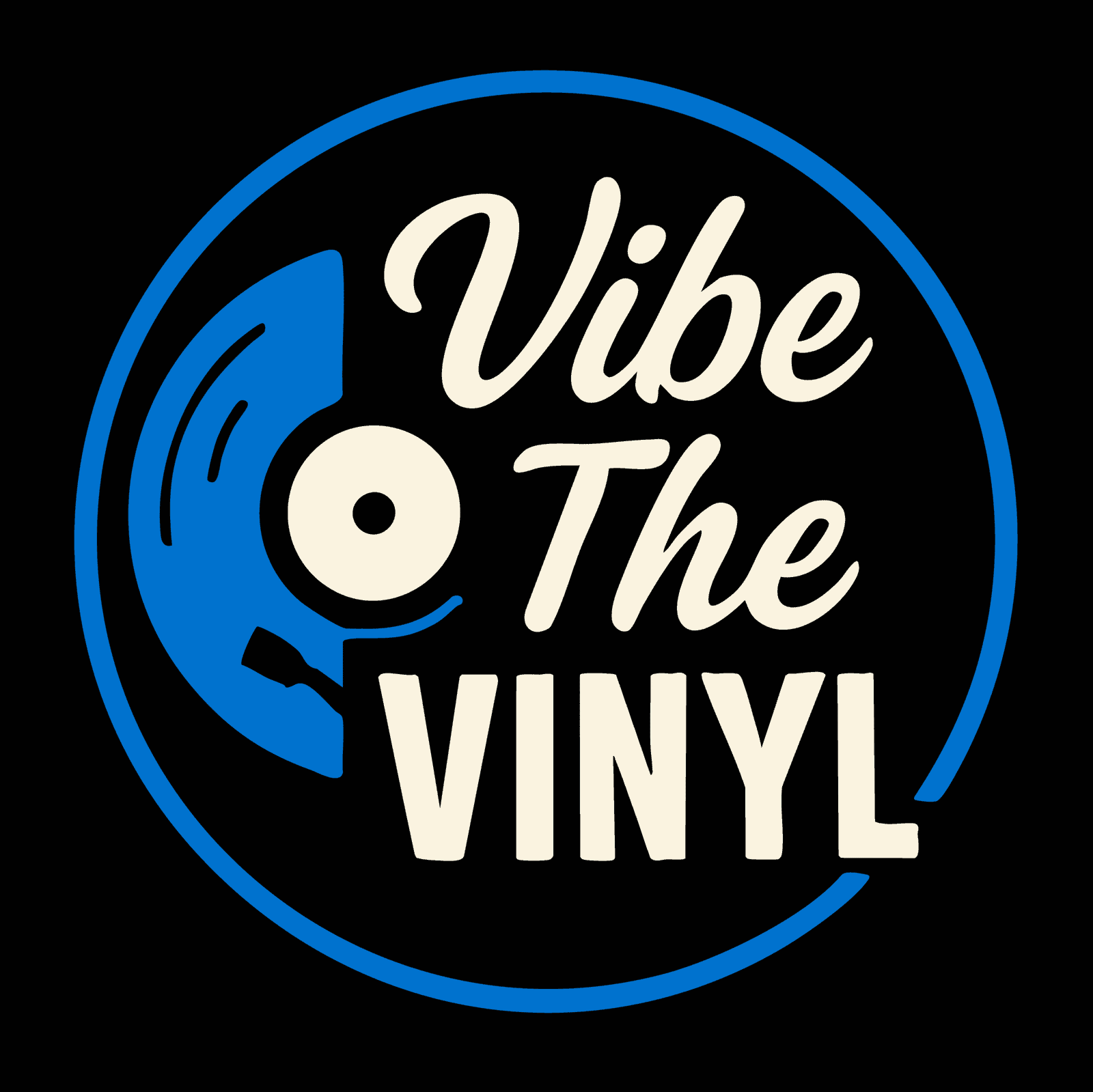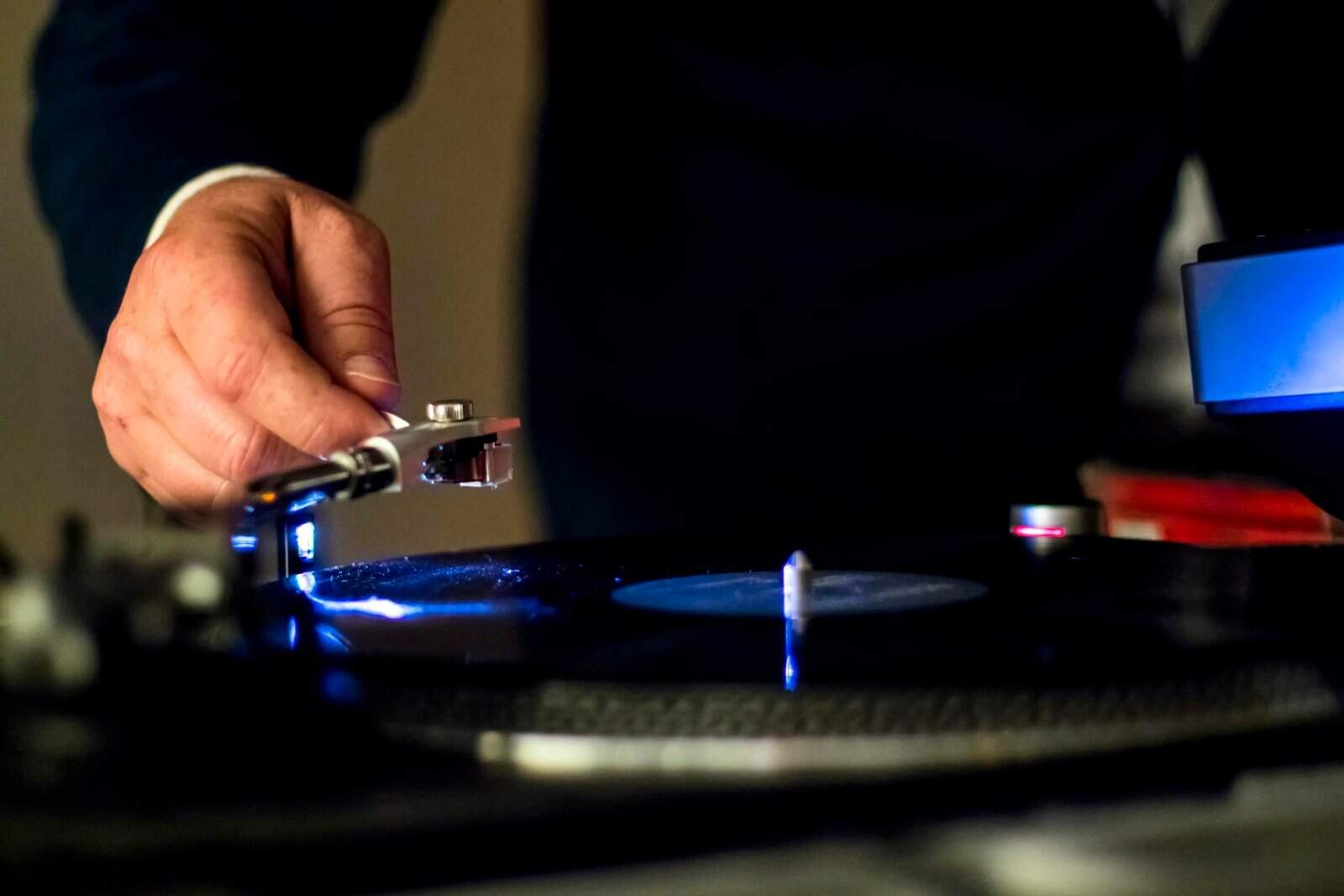Vinyl Setup Basics: Signal Path 101
Heads up: This guide contains affiliate links. If you buy through them, we may earn a small commission — at no extra cost to you.
Vinyl playback looks intimidating at first — all these boxes, wires, acronyms, and opinions. The truth is simple: a record player setup is just a signal path. Each part has a job, and once you know what those jobs are, choosing gear is a whole lot easier.
The vinyl setup signal chain is always the same:

Turntable → Phono Preamp → Amplifier/Receiver → Speakers → You
Every section below covers the basics, shows three examples (good, better, best), and ends with a Starter Setup Recommendation: a safe pick that delivers great sound now while leaving you room to grow later.
Turntables: Where the Music Begins
The turntable is your system’s starting point. It spins the record and lets the stylus (needle) trace the grooves. From there, the tiny signal gets passed down the chain.
Key things to know:
- Platter: The round disc your record sits on. Heavier platters usually mean steadier speed and less vibration.
- Tonearm: The lever that holds and guides the cartridge. A rigid, well-balanced tonearm tracks grooves more accurately.
- Stylus (Needle): The tiny diamond tip at the end of the cartridge that physically rides in the record’s grooves.
- Cartridge: The housing for the stylus. Converts groove vibrations into an electrical signal.
- Belt vs. Direct Drive: Belt drive isolates motor noise, common in listening decks. Direct drive gives rock-solid speed and durability (DJ-friendly).
- Manual vs. Automatic: Manual tables make you lift and drop the arm. Automatics handle the cueing for you.
- Built-in vs. External Phono Stage: Some turntables include a phono preamp so you can plug straight into powered speakers or a line input. Others require an external preamp.
Turntable Picks
$199.00
| $599.00
| $981.42
|
Profile:
Fully automatic belt-drive deck that's easy to set up and friendly for first-time vinyl listeners. | Profile:
Refined table with carbon tonearm and quality cartridge for a serious step up in sound. | Profile:
A high-performance direct-drive turntable with premium cartridge, electronic speed control, and serious build quality. |
Features:
| Features:
| Features:
|
Type:
Belt Drive, Automatic Start, MM Cartridge | Type:
Belt Drive, Manual, MM Cartridge, No built in Preamp | Type:
Direct Drive, Manual, MM Cartridge, No Built in Preamp |
- Belt-drive
- Fully automatic
- Switchable PHONO/LINE output
- Replacement stylus available
- Belt-drive
- Manual operation
- Carbon-fiber tonearm
- Height-adjustable feet
- J-shaped tonearm with VTA adjustment
- AT-VM520EB cartridge included
- Electronic speed control
- Solid MDF chassis
Starter Setup Recommendation
Pro-Ject Debut Carbon EVO — affordable but serious, manual operation teaches you the ropes, and the tonearm + cartridge combo gives you a system that grows as you upgrade.
Phono Preamps: The Unsung Hero
Records aren’t cut flat. They’re pressed with the RIAA curve — bass reduced, treble boosted — to make grooves trackable. A phono preamp reverses that curve and boosts the tiny cartridge signal to a normal “line level” your amp can handle.
Key things to know:
- MM vs. MC: Most beginners start with moving-magnet (MM) cartridges. Moving-coil (MC) carts need more gain and quieter circuits.
- Gain Settings: Adjustable gain helps match your cartridge’s output and avoid hiss or distortion.
- Noise Floor: Lower is better — important when listening with headphones or during quiet passages.
- Extras: Subsonic (rumble) filters tame low-frequency noise; headphone outs are great for late-night listening.
Phono Preamp Picks
- MM-only support
- Switchable rumble filter
- Gain trim knob
- LED signal/clip indicator
- MM & MC compatible
- Gain options: 33/42/48/60 dB
- Subsonic filter
- Compact design
- Low noise floor
- MM/MC support
- Headphone output
- Subsonic filter
Starter Setup Recommendation
Schiit Mani 2 — affordable, dead quiet, and flexible enough to handle MM today and MC later.
Amplifiers/ Receivers: Power + Control
Your amplifier is the muscle. It powers passive speakers and acts as your hub for sources. Some are stripped-down two-channel amps, others are feature-packed receivers.
Key things to know:
- Integrated vs. Receiver: Integrated amps focus on music. Receivers add FM/AM and more connectivity.
- Power Output: Look at RMS watts per channel at 8Ω — not inflated “peak” numbers.
- Speaker Terminals: The binding posts where your speaker wires connect.
- Line Inputs: Analog inputs for turntables (with built-in phono), CD players, or streamers.
- Digital Inputs: Optical, coaxial, USB, and Bluetooth expand your options.
- Tube vs. Solid State: Tubes bring warmth and character; solid state brings more power per dollar.
Amplifier Picks
- Stereo receiver
- Multiple inputs
- Bluetooth
- Phono input
- 45W per channel @ 8Ω
- Integrated amp
- Analog inputs
- Built-in phono
- Sub out
- 60W per channel @ 8Ω
- 50W per channel @ 8Ω
- Built-in MM phono stage
- Compact footprint; 5 line inputs
- Headphone output
Starter Setup Recommendation
Yamaha A-S301 — honest power, reliable build, built-in phono, digital inputs. A great anchor for your first real system.
Speakers: The Final Voice
Speakers shape your sound more than any other component. They’re where electrical energy becomes air movement, so they define the system’s character.
Key things to know:
- Drivers: Most speakers use a woofer (bass/mids) and a tweeter (highs). Some add a midrange driver (3-way design).
- Crossover: An internal circuit that splits the signal, sending highs to the tweeter and lows to the woofer.
- Bookshelf vs. Floorstanding: Bookshelves fit smaller rooms; floorstanders move more air for bigger spaces.
- Powered vs. Passive: Powered speakers include an amp inside. Passive speakers need an external amp or receiver.
- Sensitivity: Higher sensitivity (measured in dB) means louder sound from less power.
- Impedance: Most modern speakers are 8Ω, which is an easy match for most amps.
Speaker Picks
- Powered speakers
- Optical/Coax inputs
- Bluetooth
- Remote
- 21W RMS per channel
- 5.25" Uni-Q concentric driver
- Rear-ported design
- 86 dB sensitivity
- 8Ω nominal impedance
- Smooth, balanced sound.
- 96dB @ 2.83V/1m
- 8Ω nominal
- Tractrix horn tweeter
- 6.5" woofer
- Bi-wire/bi-amp capable
Starter Setup Recommendation
Klipsch RP-600ii — Excels with warmer solid-state or low-watt tubes. Efficient, dynamic bookshelves that rock.
Recap: Putting It All Together
A vinyl setup isn’t complicated once you see the jobs each piece performs. You need:
Turntable → Phono Preamp → Amplifier/Receiver → Speakers
If you want one simple Starter Vinyl Setup that balances quality, learning, and upgrade potential, here’s where to start:
- Turntable: Pro-Ject Debut Carbon EVO
- Phono Preamp: Schiit Mani 2
- Amplifier: Yamaha A-S301
- Speakers: Klipsch RP-600ii
This vinyl setup combination won’t bottleneck you as your tastes (and record collection) grow. It’s music-first, straightforward to set up, and rewarding right out of the box.
Next up: Set it up the right way
Now that you know what each component does, let’s put it together without the hum, skips, or cable chaos.
- Where to place everything
- How to balance the tonearm & set tracking force
- Quiet wiring: turntable → phono → amp → speakers
- Care basics so your records don’t die young














